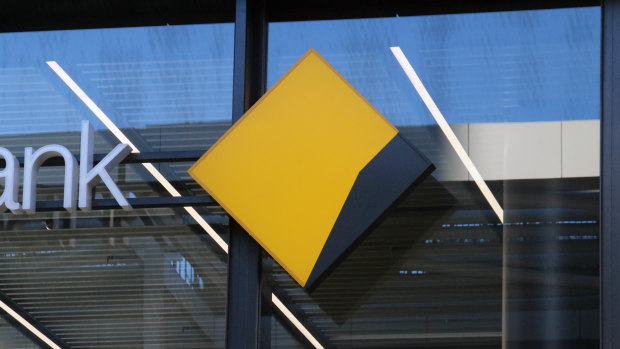Rates hike bonanza: CBA half-year profits tipped to spill over $5b
The Commonwealth Bank is on track to deliver half-year cash profits of more than $5 billion this week, as Australian banks reap the benefits of steep increases in interest rates without yet incurring higher bad debts.
Markets expect CBA to announce a higher interim dividend and wider margins as the country’s largest bank delivers its results for the December half on Wednesday, in one of the most closely watched results of the earnings season.

Analysts forecast the banking giant’s half-year cash profit, the key measure monitored by markets, will land at $5.16 billion, the first time the bank has hit the $5 billion mark in a half-year. The consensus expectation is that CBA will raise its interim dividend to $2.09, according to Citi research.
The sharp rise in interest rates since May last year has given bank profits a major boost, mainly because lending rates have increased more than funding costs, driving wider margins.
Even so, with CBA shares recently trading at record highs above $111, investors are also on alert for any signs of rising bad debt charges caused by the sharp increase in rates.
Credit Suisse analyst Jarrod Martin said these two issues – margins and credit quality – will command market attention when CBA delivers its half-year earnings.
‘The banks are not seeing anything to worry them or cause them to move provisions yet.’
Nathan Zaia, Morningstar analyst
“It’s about the margin environment, and it’s also about forward-looking statements about asset quality,” Martin said.
Martin said while some consumers would be feeling financial stress, a key risk to banks from a bad debt perspective was business lending, especially to small businesses. This is because small businesses were likely to feel the impact of consumer belt-tightening, and were less able to absorb the hit than larger firms.
Morningstar analyst Nathan Zaia said results from Suncorp’s bank last week, and a quarterly update from ANZ, suggested banks were still recording very low levels of bad debts. “The banks are not seeing anything to worry them or cause them to move provisions yet,” Zaia said.
CBA, led by chief executive Matt Comyn, is likely to have benefited handsomely from rising interest rates because it has been able to lift rates on loans while tapping a vast pool of cheap deposit funding.
Zaia said investors would also examine how much CBA’s retail customers were moving their money from low-interest savings accounts to products that pay higher rates – a shift that could dampen some of the expansion in margins.
Jarden analyst Carlos Cacho, who is tipping CBA’s earnings will exceed $5.2 billion, said he expected a “very strong” result from the bank, also predicting wider margins and low bad debts.
“I really doubt we are going to see any signs of deterioration on the bad debt front yet,” Cacho said.
Cacho and Martin said CBA’s half-year cash earnings had not hit $5 billion in the past. However, the bank’s statutory profits including discontinued operations did hit $5.87 billion in the first half of 2022.
The expansion in bank margins comes as Treasurer Jim Chalmers has called on banks to pass on higher rates to savers, requesting an inquiry from the Australian Competition and Consumer Commission into the deposit market.
RateCity last week said the ongoing rates paid by the big four on online savings accounts were “alarmingly low”, at between 0.6 per cent and 1.6 per cent. But bonus saver accounts, which require customers to meet certain conditions to get a better rate, have increased by more than official rates in some cases. CBA, Westpac and National Australia Bank are paying rates of 4 per cent on their bonus saver accounts.
Analysts say competition for deposits will increase due to higher wholesale funding costs, and because they expect consumers to be more willing to seek out better rates as interest rate levels climb.
Most Viewed in Business
Source: Thanks smh.com